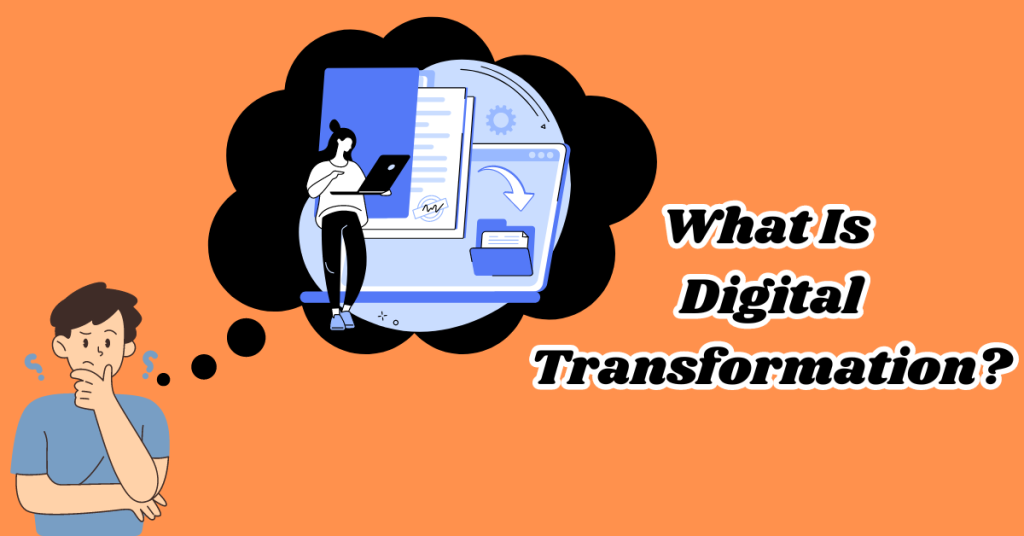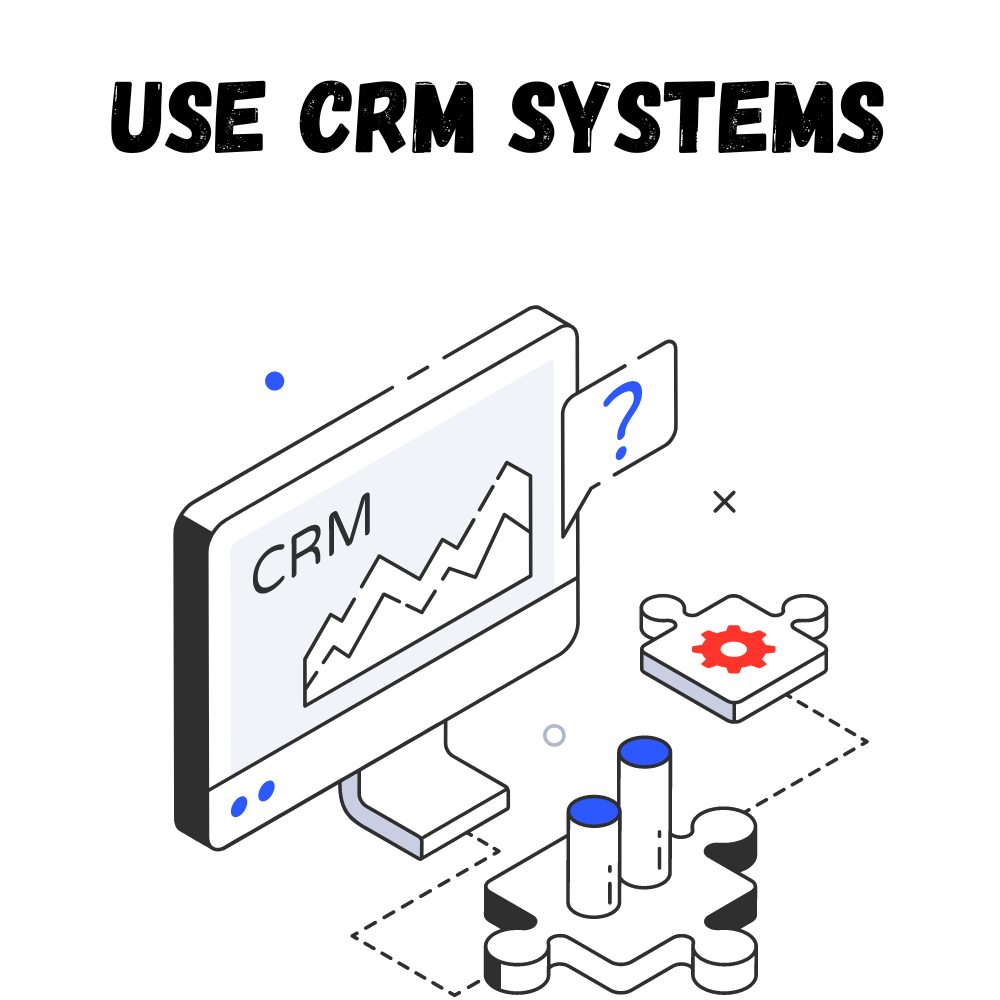Small businesses need to adapt to our fast-paced digital era. Digital transformation is an imperative for business growth and survival, not a buzzword. Small Business Owners, IT Practitioners, Entrepreneurs, and Marketers to understand how these strategies can help you get ahead in your market.
Heeding their demands, this blog post is a discussion of essential digital transformation strategies and why you can’t keep yourself away from adopting them. While also discussing the benefits of digital transformation, creating a plan, and the top 15 small business detailed strategies.

What Is Digital Transformation?
It is a process of using digital tools and technologies in each company area so that customers experience an event or activity differently. It involves more than just adopting new technologies; it needs a cultural transformation that encourages organizations to consistently question the norm, experiment, and become ok with failure.
This means that in the case of small businesses, they will be able to improve their customer experiences and innovate by steering technology towards making operations easier. Thereby, enabling businesses to compete more effectively in the age of digitalization, satisfy customer needs, and drive growth over time.
Increase in Digital Transformation Adoption
Luxury Brands – The impetus behind the change today, luxurious brand names are the sole mainstream industry as rich consumers and rich people are appreciative that spending on products and accessories is a promotion. Digital transformation demand of greater luxury increase luxury brands has skyrocketed with advances in technology changing consumer behavior benefit from this situation by creating new marketing channels for themselves
while increasing ROI (Return On Investment) through improvements such as agility at scale streamline their operations provide potential customers advice like other transformations create enriched experience tips. COVID-19 acts as a catalyst to this shift, with businesses scrambling to adjust operations from physical locations and reliance on foot traffic providing sales lead turned remote work, digital commerce, and communication.
With small businesses, they really should not delay. Companies making the shift to a more digital approach are 23% nimbler than their traditional competitors. This shows how much small businesses need to spend on digital transformation to be able to compete and stay afloat.

Importance Of Digital Transformation Strategies
Digital transformation strategies provide a way forward for small businesses on how to use technology effectively. Without a proper game plan, digital tools can flounder without being utilized properly by the company using them leading to wasted resources and lost opportunities and creating too much anger.
A well-made digital transformation strategy enables small businesses to match their investments into technology towards both changes goals. It ensures that every digital effort helps take the business forward, opening a space to prosper in an increasingly digitized future.
Benefits of Digital Transformation Strategies
Digital transformation strategies have a plethora of benefits to offer small businesses, once implemented. These are the Top Benefits:

1. More efficient and productive
Digitization simplifies processes, allowing fewer printed operations and employees to spend their time in more strategic activities. This enhances increase effectiveness, productivity, and thus profitability.
2. Enhanced Customer Experience
Digital transformation allows businesses to better understand and fulfill customer requirements companies can use Data analytics to tailor their offerings, improve customer service, and better relationships with the customers.

3. More Agility and Innovation
Digital Transformation Cultivates Innovation It spurs a culture of innovation in any business encouraging everyone to experiment with the new ideas and respond immediately to changing market situations where experimentation and pilot projects are greatly encouraged. Agility – the ability to move and operate with speed – is critical if you want to remain ahead of your competitors, or seize new opportunities as they emerge.
Creating a Digital Transformation Roadmap
Here are the steps in a digital transformation plan. Here is a roadmap to assist small businesses in getting started;

1. Assess Your Current State
During the first step: Assess your current technology, assess your processes, and conduct an organizational review. Once you reveal these takeaways, find digital tools that can provide this insight and show where it may be flawed.
2. Set Your Goals
Define your goal for digital transformation as specific & measurable These objectives should tie back into your overall business goals and act as guidance for the rest of your digital activities.

3. Develop a Strategy
Develop a comprehensive roadmap that looks at the digital tools and technologies you are considering and when they will be adopted. It shall also consider the budgets and any sort of necessary training or support to be provided to your team.
4. Implement and Monitor
Pompei recommends launching digital initiatives in sections while keeping an eye on progress and expecting to fine-tune the strategies accordingly. The first stage pertains to western GC languages, for which this discipline began in the previous years and is currently evolving; with every iteration of these stages, you get better from your learning about it.
15 Best Digital Transformation Strategies for Small Businesses

1. Migrate to Cloud Solutions
For those unaware, cloud computing enables businesses to access software and processing power over the internet which adds flexibility, and scalability all while offering cost savings. Which enables small businesses to grow their business without large capital investments for hardware or infrastructure.
2. Leverage Data Analytics
Data analytics tools to arm businesses with the insights they need to make customer-centric decisions that can drive competitive advantage. Small businesses can use the analysis of this data to discover growth opportunities, fine-tune their marketing efforts, and improve levels of customer satisfaction.
3. Implement Automation Tools
Automation tools automate routine tasks like invoicing, payroll, or customer support and help employees save their precious time on other important areas. It not only streamlines your processes but also makes them exponentially less prone to human error.

4. Boost Cyber Security Measures
In this climate of almost universal digital dependence, cybersecurity has never been more important. To avoid falling victim to cyber threats, small businesses have no choice but to make first-rate security investments for their data and systems. Such preventive measures include using firewalls, encryption, and multi-factor authentication.
5. Develop a Mobile Strategy
Having a mobile strategy allows businesses to be in the palms of customers. This involves steps such as having a website that is mobile-friendly, building an app dedicated to the appeal of your business, and engaging in whatever marketing techniques are used on mobiles.
6. Put Some Money in E-Malls
E-commerce platforms are a stylish manner for small agencies in the retail sector to reach out to new clients and increase sales. With businesses being able to set up an online store, their potential audience reach can go beyond the local area and tie into what seems like a consumer trend of shopping from home.

7. Use Social Media Marketing
Social media sites provide a free way to attract potential customers, generate awareness, and convert leads into sales. Having a social media plan where you are posting regularly, and engaging with those who follow your page backed up by some sort of paid advertising on the large network can get things going for small businesses.
8. Customized Client Engagements
Differentiate on Personalization – Strong Customer Relationships & Loyalty Through data analytics and automation tools, businesses can provide customers with personalized content (think recommended products to buy), and tailored marketing messages based on their preferences.
9. Foster a Digital Culture
Digital transformation isn’t just tech changes, but a cultural change within the organization. Empower employees to use digital tools, play with new ideas, and learn constantly. This is the mindset that will drive innovation and secure long-term success.

10. Use CRM Systems
While CRM stands for customer relationship management, and it is just that. A set of practices to guide your company to manage their relationships & interactions with customers throughout the lifecycle you are providing a service or product – from pre-purchase research right through post-sale support – assist business growth.” These assist businesses in deepening relationships, enhancing customer satisfaction, and improving sales results.
11. Streamlining supply chain Management
Small businesses can use digital tools to fine-tune their supply chain, including managing inventories more effectively and shrinking lead times while also strengthening supplier partnerships. This results in cost savings and better efficiency.
12. AI (Artificial Intelligence) Software Powered
Small businesses can leverage AI technologies like Chatbots to Automate, Predictive Analysis and Machine Learning. These tools can empower customer service, direct decision-making, or catalyze innovation.

13. Invest in Digital Marketing
Businesses leverage digital marketing strategies – such as search engine optimization (SEO), pay-per-click (PPC) advertising, and content marketing – to attract new customers, and drive sales. Small businesses need more visibility on the market and hence, in investing these techniques could get them new customers online.
14. Develop a Digital Workforce
Provide your staff with the modern skills and tools to thrive in a digital economy. It involves training and filling the gaps with new technologies, building a culture of continuous learning as well as collaboration and innovation.
15. Measure and Optimize
Result with tracking to slowly improve your performance over time, by changing the efforts accordingly based on data. Using this cyclical approach allows your digital transformation efforts to keep delivering value and growth.
Conclusion
In this fast-paced digital world, every small business needs to embrace the power of digital transformation if they hope to stay competitive and continue growing. In this blog post, we discussed 15 strategies – from small business IT support in New Jersey to Miami entrepreneurs tasked with developing cutting-edge technology – for how owners and those working remotely can use today’s rapidly evolving tech landscape to skyrocket efficiency, modernize the client experience, or take your overall approach as an entrepreneur.
So, just a reminder you need a good strategy to guide digital transformation initiatives that support your overall business objectives Begin by evaluating where you are now, then identifying your goals and coming up with a simple actionable plan. It is up to you, but a business plan focused on the above seven principles can certainly drive your small business to high levels in these digital times.
Interested in learning more about the next stage of your digital transformation? Find more ways how you can start your journey today and do not forget to take help from the experts who will assist you in progressing. For your future business

Is an Entrepreneur, Business Adviser. He loves to do research on the business and acquire knowledge on the business topic and this knowledge he used in his business. He also believes that sharing is caring that’s why he starts to write for those people who actually need help with the business, marketing, business strategy, skills, and creativity in business topic which is very important for them.



